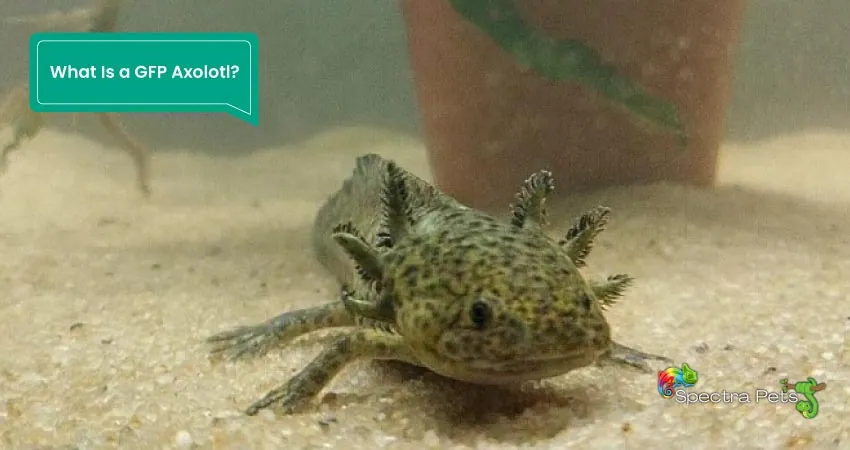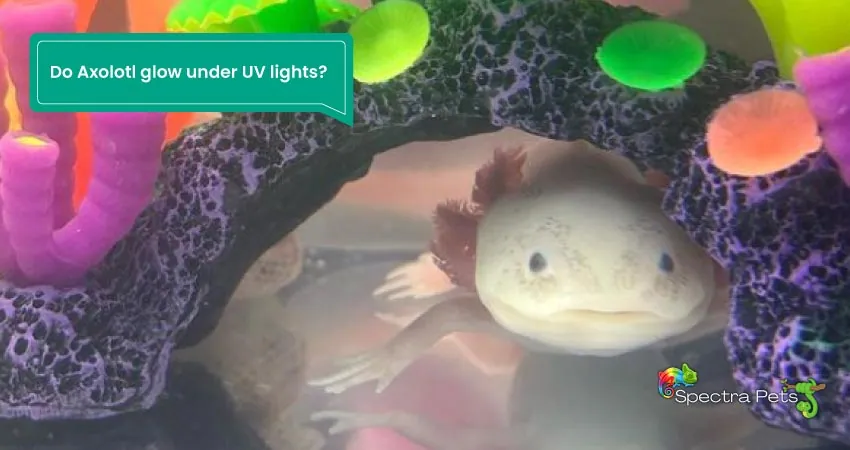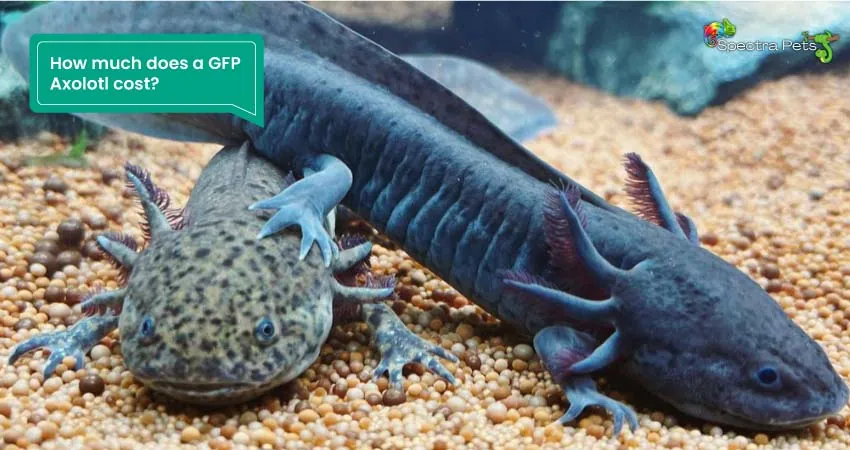Remember that episode of the big bang theory, where Sheldon Cooper made his own glowing fish? Didn’t we all think how cool it would be to have one of our own? What if we had an Axolotl, which is one of the rarest pets that could glow at night? It’d be like having one of the most secret relics in the world, the rarest of the rare.
But sadly, Axolotls do not glow in the dark, naturally. To have one such pet, you need to get yourself a special kind of Axolotl known as the GFP Axolotl. It will glow under UV lights.
Never heard of such a thing before? Well today is your lucky day because I’ll give you a delicious scoop about GFP Axolotls and the secret to their glow…
What Is a GFP Axolotl?

Axolotls can do a lot of crazy things. They can change their voice, transform into a salamander, even regenerate their limbs. But glowing in the dark isn’t one of them. That, however, is when we’re only talking about natural methods.
In genetically modified Axolotl’s like the GFP, it’s perfectly possible to give them the gift of radiance. They are bioengineered so that when they’re exposed to UV light, a protein synthesis will result in your axolotl glowing in the dark.
Since Axolotl themselves lack a bright skin color, the protein gets exposed. Fun fact: scientists also use GFP Axolotl to research their limb generation.
What is a GFP?
Since we’re on the topic of GFP Axolotls, I thought we won’t be able to go too far if I don’t explain what GFP itself means. GFP is a short form for green fluorescent protein. This special type of protein will glow in the dark when it’s under UV light. The color of the glow will be blueish green.
“Like jellyfish?” You might be thinking in your head. You’re totally not off the mark, because the gene which is responsible for the GFP resides in jellyfish. You’ll also find them in other deep marine creatures. It’s just that Axolotl doesn’t have this gene by nature.
This gene was first discovered in the 1960s, and it took all the way to the 90s to find a safe and practical method to instill into the genes of other animals.
Do Axolotl glow under UV lights?

Absolutely. In fact, UV lights give Axolotls, that are genetically modified for bioluminescence, the ideal lighting conditions to show off their glow. It’s because regular fluorescent lights are made with the intention to illuminate every corner of the room.
On the other hand, UV lights or Black Lights let out a small amount of usable light, just enough to see your Axolotl glow in the dark.
One thing you might not know is that your axolotl can glow in the presence of sunlight, but there are precise and tight conditions. It has to be dim sunlight, kind of like from a setting sun that comes through a window. Again, I’m stressing that such conditions are really hard to set up, but possible and short-lived.
In the end, it’s best just to use UV lights on them.
Is UV light bad for Axolotl?
Till date, there have been no proven negative impacts of UV lights on GFP Axolotls. People get scared because they think every exposure to some sort of chemical is bad. But that’s just a misconception at the end of the day.
However, just like overexposure to UV lights causes irritation for human skin, it could do the same for Axolotls too, we might just know it yet. I’m asking you to be extra cautious because Axies have sensitive skin and lack eyelids.
Don’t worry, I’m not taking away your pet glow show, but how about we try reducing the showtime?
You could turn on the UV lights and watch your Axolotl glow for 15-45 minutes, then take a break, return later for more. This way, if you break it down in sessions, I’m sure everything will be fine.
How much does a GFP Axolotl cost?

Due to their ability to glow in the dark, GFP Axolotl are more expensive than their non-GFP counterparts. And axolotl themselves are rare, so we are talking about a rare species which has rare genes instilled into them.
Be prepared to fork out around $100 for one of these. Color also plays a part, so you could find a GFP Axolotl for $50, but the color of its glow won’t be as awesome as the expensive ones.
So here’s a general cost range: $50-$100.
Additional Read: GFP Axolotl Care Guide
Frequently Asked Questions (FAQ)
What part of the Axolotl’s body glows?
The entire body of the GFP Axolotl has the ability to glow. However, depending on the age and morph, the intensity of the colors will vary on different body parts.
Are Axolotls bioluminescent?
No, since Axolotls don’t have radiance through their natural genes, they aren’t considered bioluminescent.
Will the offspring of GFP Axolotls glow as well?
Yes, the offspring that come after a GFP Axolotl, will have the same glowing genes of their predecessors.
To Conclude
Remember two things: Axolotl with the genes to glow, and UV lights. Unless you have both conditions, you won’t be able to get yourself an Axie that glows at night.
Finding one could be pretty hard in itself. I wish you luck and may you have tons of fun with it.
